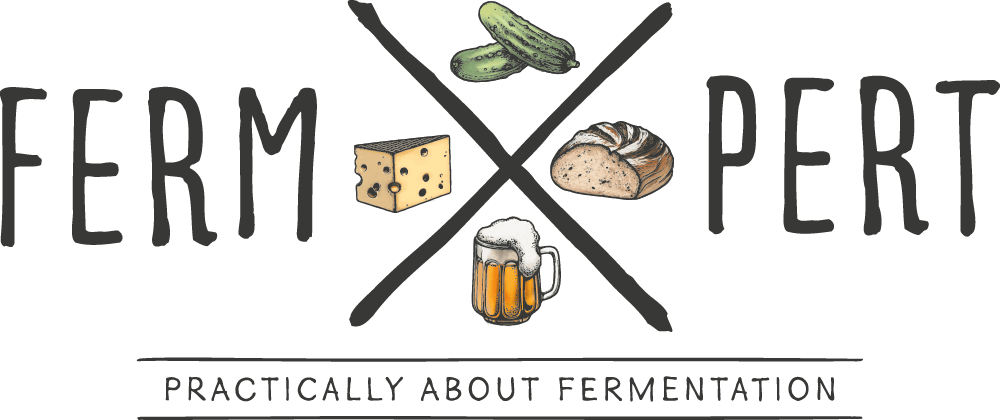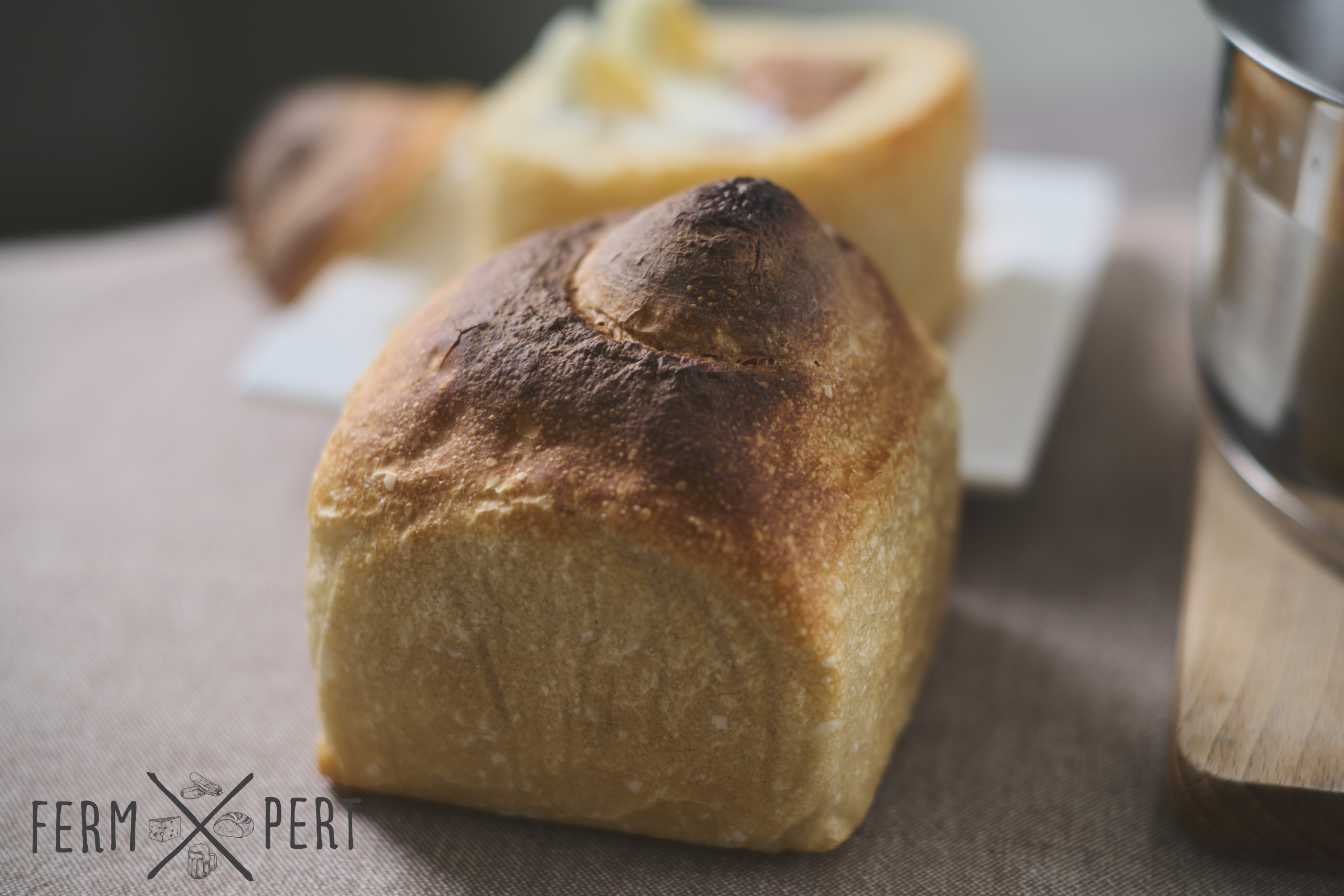An edible bread bowl is an interesting traditional way of serving certain soups in Poland. Typically, żurek and barszcz biały (literally, “white borscht”, a soup similar to żurek, but made using wholemeal wheat flour instead of rye) are served like this, though I’ve come across other possibilities as well, such as boletus cream soup.
Recipe
The proportions given below are enough for one small bread bowl. The amounts given in parentheses are scaled up by 1/3 and will make a larger loaf that can hold more soup.
Dough hydration is 65%, salt and yeast amount to 2% of the flour’s mass each. Total dough mass is 253 g (338 g).
Ingredients
- 150 g (200 g) strong white wheat flour
- 97 g (130 g) water
- 3 g (4 g) fresh yeast (in order to replace with dry yeast, cut the mass in half)
- 3 g (4 g) salt
Method
Dissolve the yeast in water. Add salt and flour, knead the dough until a strong gluten network is formed (around 10 minutes). Leave the dough to rise, covered, until it doubles in volume (1-2 hours).
Separate a small amount of dough that will form a “handle”. Shape both dough pieces into tight balls, then leave on the counter for a few minutes for the gluten network to relax. Shape tight balls again. Gently poke a hole in the larger dough ball’s top surface, being careful not to tear the gluten mesh. Form a spike on the bottom of the smaller ball, then stick it into the hole in the larger ball. Place the shaped loaf in a square loaf tin (greased or lined with parchment paper). Leave to rise until the loaf doubles in volume again (30-60 minutes). Bake with steam at 230°C (446°F) for 45 minutes.
Cut the top off the loaf and hollow it out. Use to serve dense and creamy soups or stewed dishes, such as bigos.
Additional Information
A typical bread bowl isn’t baked in a tin. Instead of using one, it’s enough to place the final shaped loaf on a baking sheet lined with parchment paper. When the dough has risen, the sheet can be placed in the oven. When doing this, it’s good to make sure the flour is strong enough to support the rising dough without letting it spread outwards too much.
The “handle” is optional and it can be skipped entirely. It’s traditional to add it but it serves no real purpose other than being a decorative element.
Should a thinner, more watery soup be served in the bread bowl, it might be necessary to seal the bread to prevent it from soaking up liquid and becoming soggy. Once the loaf is hollowed out, the inside walls can be brushed generously with a beaten egg. After that’s done, the loaf should go back into the hot oven for a few extra minutes for the egg to coagulate, creating a seal.
Video Transcription
Żurek, a typical Polish soup made using fermented rye flour, is often served in an edible bowl: a hollowed-out loaf of bread. Today I’m making such bread. The written recipe can be found on the blog.
While the soup itself uses rye flour, the bread to hold it is typically made from white wheat flour. I’ll also need water, salt and yeast. It’s a very basic dough.
I like to start by dissolving the yeast in water. I also add salt. Flour goes in last. I roughly mix the ingredients in the bowl, flip the shaggy dough onto the counter and knead. The dough’s hydration isn’t too high so it’s not particularly sticky. After around ten minutes of kneading, I perform a windowpane test and I can see that the gluten mesh is formed correctly. I am able to stretch the dough to a translucent layer before it breaks.
I put a few drops of oil in the bowl and spread it to prevent the dough from sticking. The dough goes in. I cover it in oil and let it ferment, covered until it at least doubles in volume.
The fermentation is performed by the yeast, Saccharomyces cerevisiae. In a series of chemical reactions, some of the starch from the flour ends up transformed into ethanol and carbon dioxide. The latter compound is what inflates the dough, allowing it to rise.
The dough is nicely inflated. It’s time to divide it and preshape it. I use a scale to divide the dough in half. I knock each half back and shape it into a tight ball. I’ve nearly forgotten to take a piece from each dough ball. I’ll use these to form a handle on top of each loaf. Now, the preshaped dough will rest for a quarter of an hour. This will make the gluten network relax.
Fifteen minutes later, I can final shape the loaves. I lay each ball smooth side down, flatten it, fold the edges in and again form a tight ball. With a moist finger, I make dimples on top of the balls. I try not to break the gluten mesh. I form beaks on the smaller dough pieces and insert them into the dimples. Traditionally, I’d transfer the loaves onto a baking sheet and let them rise. However, I like to use baking tins. The loaves will rise until they’re ready to be baked.
Here they are, ready to go into the preheated oven. And here they are after baking. The handles on top got a little flatter than I’d like, but otherwise, they look great.
Since I’m using the bread as an edible bowl, it’s difficult to taste it on its own. I’ve already hollowed one out to fill it with żurek. The crumb is soft and spongy. It smells really nice, though that’s to be expected of a yeasted bread freshly taken out of the oven. It tastes nice. The top is the best part though. I toasted it under the broiler before serving the soup. It’s beautifully crunchy and tasty. Not an exquisite bread by any stretch, but its purpose is to be a bowl. And for that, it works great.

